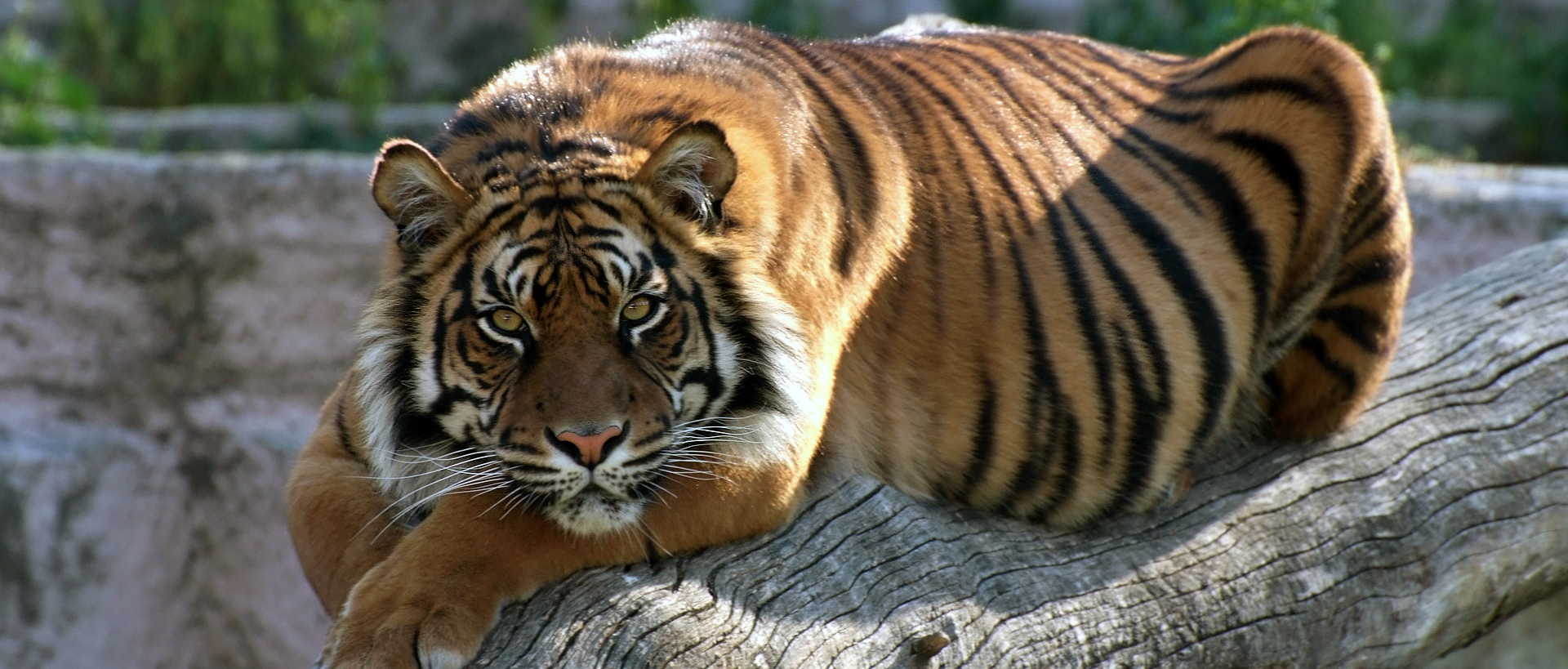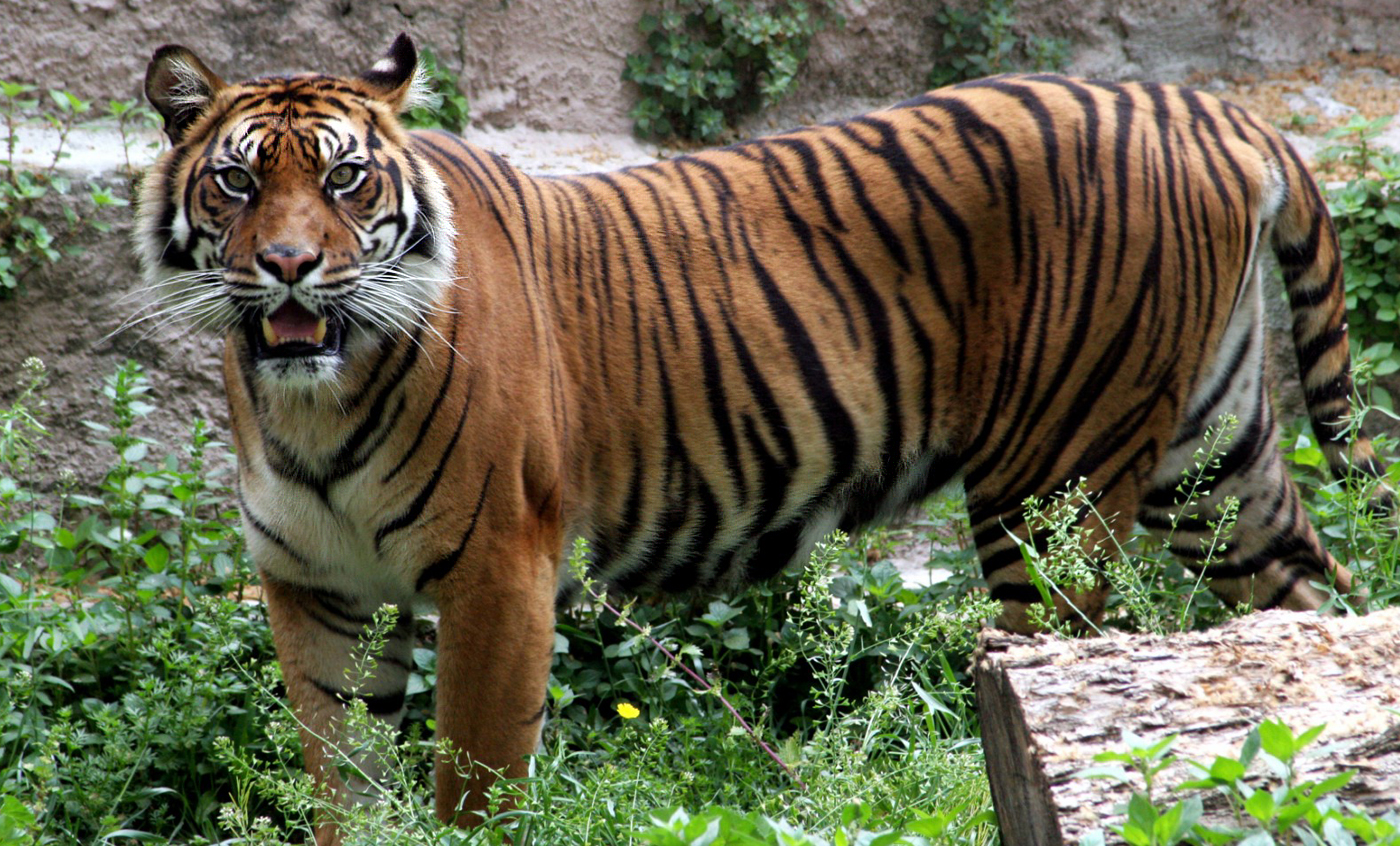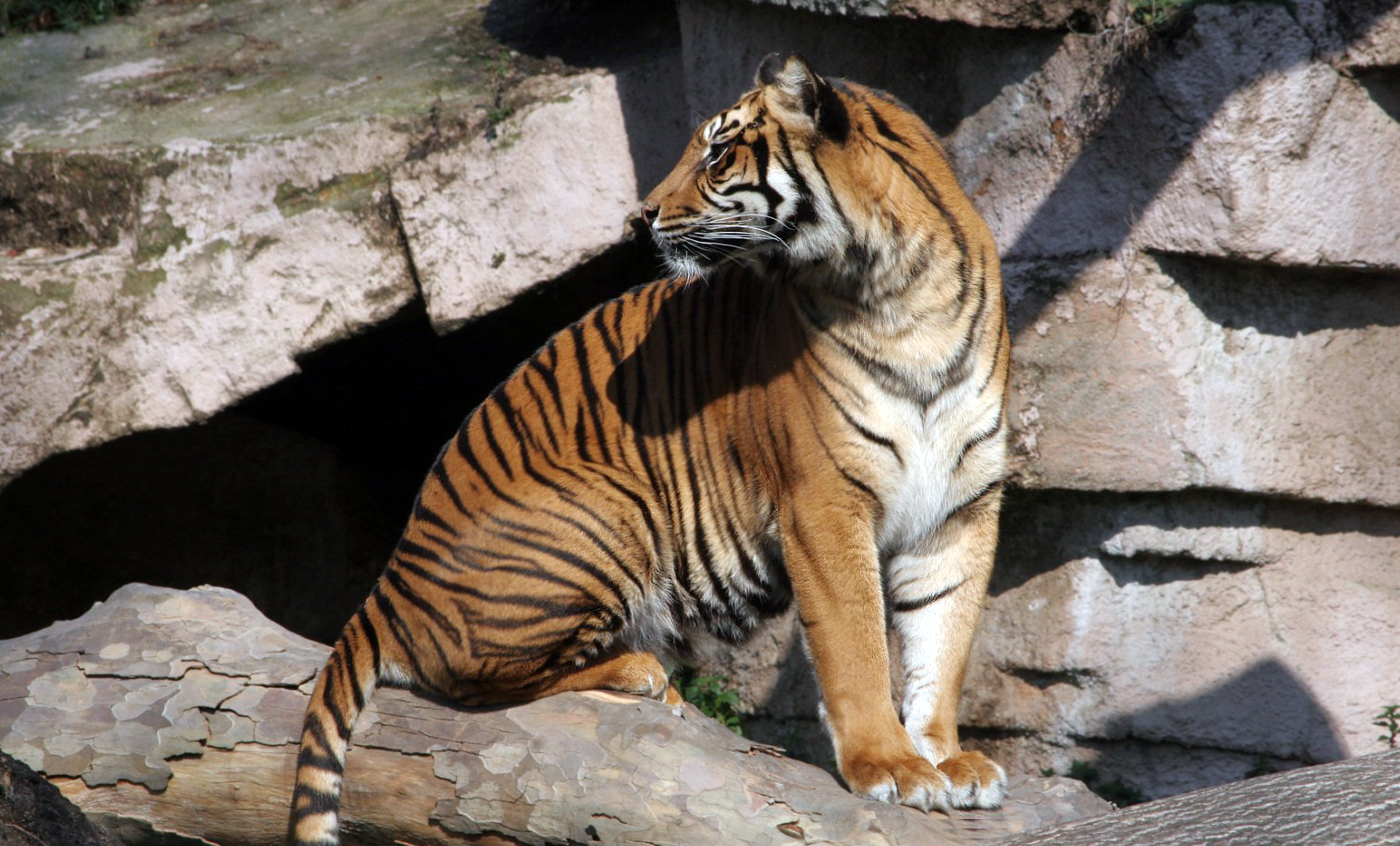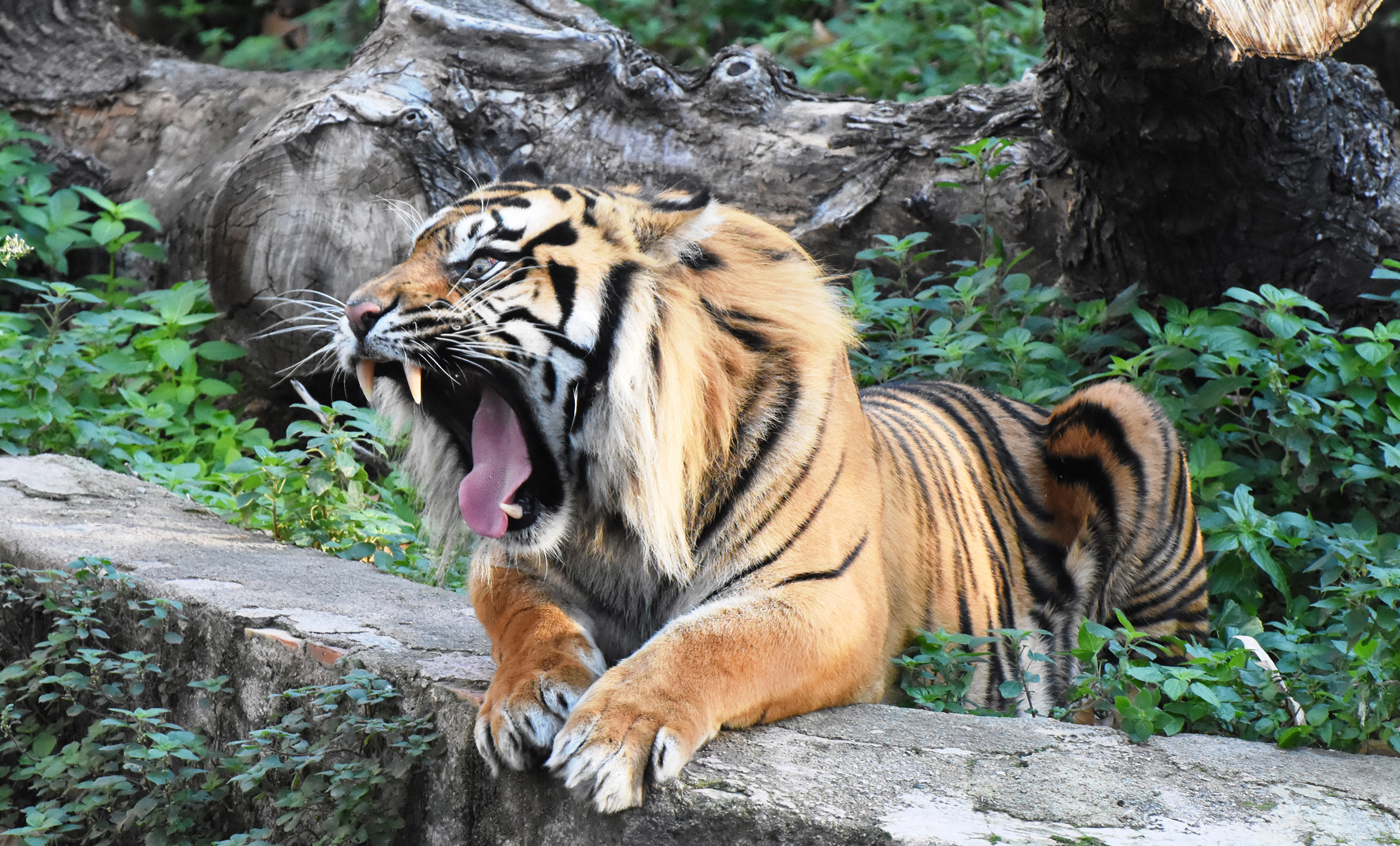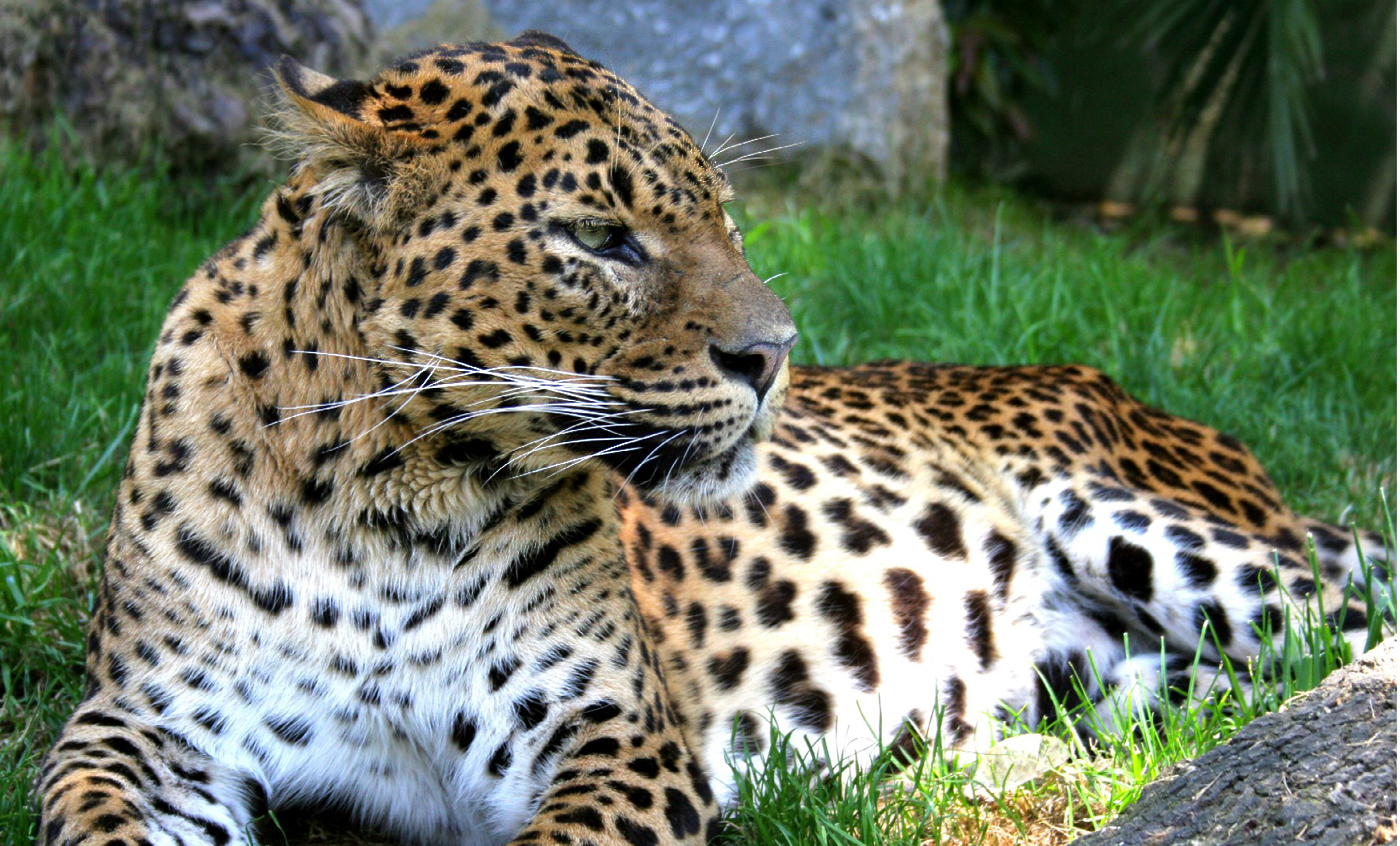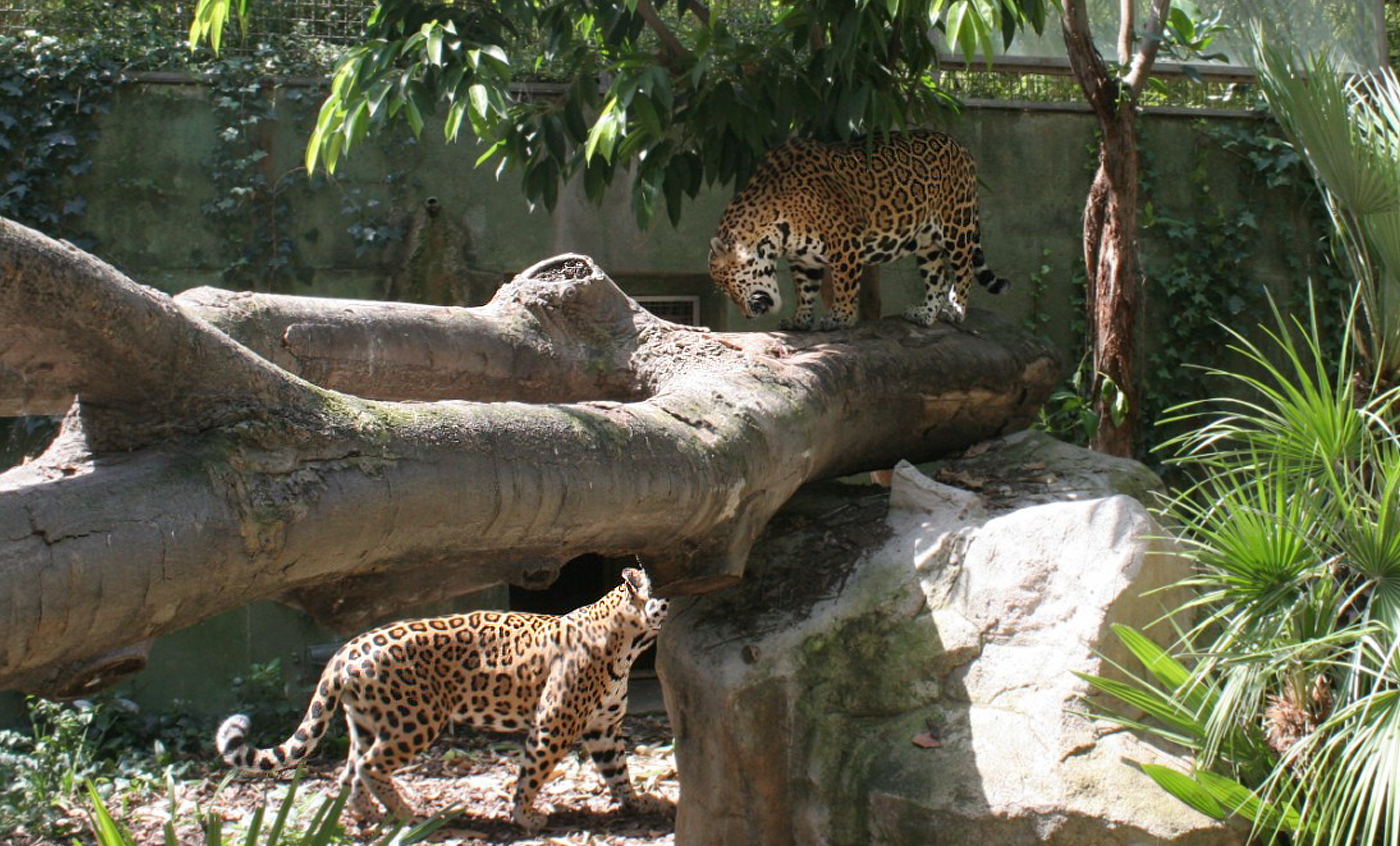Sumatran tiger
Solitary and nocturnal, the tiger is the largest living feline, with specimens weighting more than 300 kg. Their distribution area ranges from Siberia to the Sonda islands, although it has been greatly reduced due to the hunting and destruction of its habitat.
The ones in the zoo belong to the Sumatra subspecies, Panthera tigris sumatrae, which only lives in this Indonesian island.
Breeding program
Natural habit
Sumatra.

- Distribution / Resident
- Breeding
- Wintering
- Subspecies
Risk level
- Extint
- Extint in the wild
- Critically endangered
- In Danger
- Vulnerable
- Near threatened
- Minor concern
- Insufficient data
- Not evaluated
Taxonomy
Physical characteristics
Biology
Reproduction
Biology
The Sumatran tiger holds the verified record of the smallest tiger ever reported, a female adult weighing only 72 kg. It can be distinguished by its general darker colour, by its small mane on the nape and because it is the subspecies with the longest facial hair.
They are typically forest animals, living in the Sumatra island, either in lowland plain forests and in mountain forests.
Tigers are solitary animals that usually hunt at night. They capture all kinds of prey, often deer or wild boars, but they also prey on monkeys, birds, fish or even crocodiles. Organgutans are also potential preys of the Sumatran tiger, although it happens on rare occasions, as these big primates seldom descend to the ground.
Sumatran tigers can reproduce any time of the year and gestation lasts for an average of 103 days. Normally between two and four cubs are born each time, although births of up to six cubs have been reported. They are born in a den, hidden among vegetation or rocks, and start leaving for the first time after three or four weeks. They remain with their mother until they are two years old.
They are territorial animals, which mark their territory be leaving their odour on trees and bushes. The territory of females can overlap with a male’s territory, but not with other females’. They often hunt at night, sometimes travelling far looking for preys.
This tiger used to live in all the Sumatran territory, but nowadays most of them can be found in the mountain regions of the Burit Barisan volcanic area, at the centre of the island. According to the last census on this animal (2008), the remaining population scarcely exceeds 500 individuals. This species is currently threatened with the destruction of its habitat and with poaching, to sell and trade its parts for traditional oriental medicine or as a trophy.
The Zoo of Barcelona takes part in the EEP of this species.




